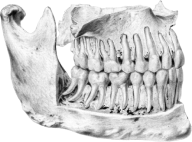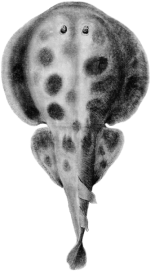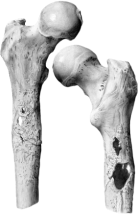
Medicine at the Movies
2nd November 2009–31st March 2010
Medicine at the Movies was a project to give older learners from the local community a chance to learn how to make a film in less than 10 weeks!
The Hunterian Museum worked with 11 members of the over 60’s Club at the Mary Ward Centre in Queen Square. The group was a diverse mix of people from a wide range of backgrounds but with a shared passion for learning and the desire to learn something new.
The final product is Encounters: 10 Words to John Hunter
Please be aware that this film is inspired by the museum collections and contains images of preserved human remains.
The Medicine at the Movies project was divided into two parts. The first four workshops were a chance to find out more about the museum. Facilitated by artist and educator Jean Campbell, together with museum staff, the group explored the museum collections on display and investigated the skulls, teeth, preserved specimens and historical surgical instrument collections in our store rooms.
Each student used a sketchbook to record their thoughts, observations and ideas. Their sketchbooks can be viewed on Flickr.
For the remaining six workshops artist Marianne Holm Hansen asked students to consider “Film is …? Marianne showed them avant-garde Czech cinema, Japanese anime, art installation pieces and documentaries to broaden their experience of film and to encourage them to believe that ‘film is anything you want it to be’.
Participants then gained practical experience of filmmaking, learning how to produce a story board, write a script and create film footage. To keep things simple, the students used FLIP cameras to capture their personal interpretation of and response to the museum collections. The students helped one another with filming and sound recording, developing valuable team working skills.
Working together as a whole group they shared their ideas about how best to present 11 people’s work as a coherent whole. The group decided that each person should chose one word that they felt represented an aspect of the collection and produce a short clip about that word.
The students were not without their apprehensions and they recorded what they felt they had learnt up to that point and what they were excited about for the final workshops.
Finally, once the theme and structure were agreed, the students worked again in small groups or pairs to develop and film their own sections, as well as edit and add sound to their clips.
The Medicine at the Movies project, which the Hunterian Museum participated in alongside five other members of the UK Medical Collections Group, received a Commendation for Digital Access onsite at the UK Jodi Awards 2010.
The Jodi Awards for accessible digital culture are about disabled people gaining access to information, collections, learning and creativity. The awards are given by the Jodi Mattes Trust in memory of Jodi Mattes, a young museum professional who was a tireless champion of equal access to culture for disabled people.
Find out about what the students felt about taking part in the project and the facilitator’s observation on what one student learnt.
A perspective on a student
J was one of the quieter members of this over 60s group, appeared nervous and worried at the start of the project. She declared an early interest in the display of preserved foetus during the introductory sessions. This interest expanded when the group viewed a film installation within the museum in which ‘voice’ was given to chosen exhibits. Overwhelmed by her first attempts at filming, J clearly expressed her fear about not being ‘up to the task’ in a brief, filmed feedback session. However, the skilful pairing, by the film maker, of J with a more calm and confident member of the group, led to her rapid growth in confidence and development of skills in both the filming and editing process. J’s contribution to ’10 Words to John Hunter’ is a sensitive and well-crafted telling of the mother’s story that marks her own unique and remarkable journey through this project.
What did I learn? H’s tale
I’m a retired chef who began taking art classes at the Mary Ward Centre after retirement and it was through the Mary Ward Centre that I learned about this project. I was very interested in it because I knew nothing at all about film although I enjoyed going to the cinema.
There were so many different learning activities within the project, all of them fascinating and stretching. We learned how to work effectively as a large group and in smaller teams. We set agreed targets and practised the negotiation skills essential to achieving successful outcomes. We began to look at the museum and its exhibits in a new light, and learned from the other members of the group how many different ways one can perceive the same object. We learned how to operate a flip camera and how to use a storyboard to lay out our ideas. We learned how to use dialogue, sound effects and music in film. Finally, and perhaps most challenging of all, we learned how to edit our material to make a finished product.
I benefitted immensely from all the learning activities. I now look at film in a completely different way, appreciating the technical aspects of it instead of simply watching the plot. I’ve already put into practice some of what I learned in that I use my camera differently, taking pictures so that they link into a story line, rather than taking a series of separate images. In a sense I’m making a film in still images.
My next goal is to use the technical filming and editing skills I acquired on the project to make a short film (or even a series of films!) about my family history. I think that a film would be an accessible and effective way of sharing with my relatives the research I’ve done on our family.
This project was truly a life-enhancing experience for me that introduced me to new technologies. And that in turn has opened up new horizons. I’m very grateful to have had the chance to participate in the project and for the wonderful guidance and stimulating input we received from our facilitators and from all those who participated in the project.
PPP - P’s perspective on the project
When we were first told of the initiative that was to make it possible for groups of people following further education creative courses to link with medical museums to produce a short film, my tentatively positive reaction see-sawed with the prospect of all those bones, bits of bodies-bits of diseased bodies, at that. Our group was to be all over sixty – an ideal time to be embracing an enthusiasm for skeletons?
But it was the very oddity of the proposition and the opportunity to learn the elements of filming that confirmed my interest and so I signed up.
Our two principle guides for the course were Jean Campbell, to introduce us to the Museum, and Marianne Holm Hansen, to teach us how to make and edit a film. Handsome sketch books and pencils were provided and in sessions over a period of three months we were invited to make our own personal map of the Museum and to note and draw particular exhibits that intrigued us. We met various members of the Museum’s staff, including the Museum’s director (Briony Hudson), who showed us their favourite exhibits, explaining their background. And we were shown the storerooms, too, where astonishing stacks of exhibits could be seen on request. My storeroom favourite was a drawer revealing rows and rows of jawbones, a grinning skeleton circus, reminding me of Ogden Nash’s poem for the Carnival of the Animals: “At midnight in the museum hall the fossils gathered for a ball …”
The objective was to record our response to the Museum both as a group and as individuals to be contained in a film of only five minutes. True, we all came from the Mary Ward Centre but we were still a pretty disparate group and it’s a tribute to all concerned that we tussled over ideas with generosity and good humour. We finally agreed that each student would choose one word to express their response and illustrate that word with a segment of film of not more than thirty seconds.
As we embarked on learning how to film, something new to us all, we were lent the small, easy to use, Flip cameras and were able to move about the Museum practising gleefully. The challenge then was to develop a ‘story’ for each of our segments, beginning with a storyboard, a script, or both. We were divided into groups of two or three, so each person had one or two people to assist. Voice-overs, poetry, music, and quotations were added, enriching the mix. We found how filming really focuses just where and how you look, if you want to show and share your discoveries effectively. One session found me lying on my back in the middle of the Crystal Gallery, so keen was I to capture a 360 degree view in order to express my delight in this astonishing, glittering cave, my absolute favourite part of the Museum.
Learning to edit followed and here we really did wish we had more time to get the hang of the process. But patient Marianne soothed our frets and frustrations, supporting us through that final stages, so we went on learning until the last detail was in place.
We began in December and in March were given the great treat of being able to see the film in one of the Royal College of Surgeons’ Lecture Halls, with friends and family invited to share this first screening, followed by wine and a tour of the Museum. Then two weeks later we had a jolly day out to the Leeds Thackray Museum to a showing of all the films, which proved to be very interesting and surprisingly varied.
We got to know and love the Hunterian Museum, and to appreciate the people who run it who were so helpful and hospitable. We learned how to use a Flip camera and the basics of editing. The experience was a happy one, encouraged and guided by excellent teachers who taught us new skills and gave us the confidence to use them.
Our grateful thanks to all those who made this unique experience possible.
Medicine at the Movies was a collaboration between six members of the UK Medical Collections Group to make and screen films about medicine and medical museum collections. The project was funded by the then Department for Business, Innovation and Skills through the Learning Revolution Transformation Fund. Each museum worked with diverse audiences of adult learners from their local community.
The Medicine at the Movies partners were:
- The Thackray Museum working with CoHearent Vision (the Leeds Deaf and Blind Society)
- The Hunterian Museum at the Royal College of Surgeons, working with older learners from the Mary Ward Centre
- The Edward Jenner Museum, working with Gloucester Action for Refugees and Asylum Seekers and the Council for Ethnic Minority Voluntary Organisations
- The George Marshall Medical Museum working with No 10 Sansome Place, a support organisation for adult mental health service users
- The Old Operating Theatre Museum and Herb Garret working with a self-organised creative writing group
All the films made by the groups are online along with a series of short documentaries made during the workshops.
Please view our films and tell us what you think!
The Hunterian Museum would like to thank the students who took part in this project and the staff at the Mary Ward Centre for making it happen.
The museum would also like to thank NIACE, the Learning Revolution Transformation Fund, and Emma King for providing funding, practical support and guidance for this project.


